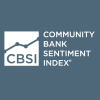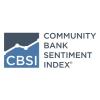Statement by FDIC Acting Chairman Martin J. Gruenberg at the 10th Community Banking Research Conference
Good afternoon, I very much appreciate the opportunity to speak at this 10th Community Banking Research Conference. The FDIC is pleased to co-sponsor this event with the Federal Reserve System and the Conference of State Bank Supervisors.
I would like to thank the Federal Reserve Bank of St. Louis and their outstanding administrative and technical teams for hosting the conference. I also want to thank the conference organizing committee, led by Jim Fuchs of St. Louis and with members from the Federal Reserve System, the Conference of State Bank Supervisors, and the FDIC, for the outstanding conference agenda. I also want to express my gratitude to the presenters, discussants, and panelists for sharing your insights and making this conference particularly engaging.
I would also like to take this opportunity to recognize our friend, John Ryan, who served for many years as the President and Chief Executive Officer of the Conference of State Bank Supervisors. John was a proponent of a strong community banking sector in the United States. We were proud to partner with him in service of a safe and sound banking system. John's leadership was key to getting this conference off the ground and to its continued success. It will serve as an ongoing tribute to John and his vision that dialogue between community bankers, regulators, and researchers leads to better outcomes for all.
This conference is a valuable vehicle to discuss recent academic research on community banking, and the important policy issues that affect these institutions. Community banks play a vital role by providing credit and other financial services to communities around the United States, many of which are not served by larger banks.
Community banking is the prevalent model of banking in the United States and is especially so for FDIC supervised banks. Of the 4,771 FDIC-insured banks as of June 30, 2022, about 91 percent were community banks according to the FDIC's research definition. The FDIC was the primary federal regulator for 3,080 institutions as of June 30th, including the majority of community banks. As a result, community banking has long been central to the mission of the FDIC.
The FDIC's recognition of the distinct issues faced by community banks is reflected in a number of ways. These include asset-size distinctions in many important regulations; a Community Bank Advisory Committee that meets regularly with FDIC Board members and senior staff; and the regular publication of a separate community bank section of the FDIC Quarterly Banking Profile. Community bank related research appears in the publication FDIC Quarterly, and in FDIC working papers and staff studies. Our Research Division published two major studies of community banks in 2012 and 2020. The 2012 study was the first of its kind, and both are well worth reading.
In the remainder of my time, I will discuss the nature and importance of community bank lending, structural trends relating to bank branching, and evidence about community bank performance during the pandemic.
Nature of Community Banks
Research at the FDIC and from the academic community—including many people at this conference—suggests that community banks are especially well suited to meet the needs of their communities through their roles as relationship lenders.1 In meeting the financial service needs of small businesses and farms, community banks support the broader economy. As we know, small businesses employ 47 percent of the American private workforce and have contributed on average 65 percent of new net jobs since 2000.2
Recognizing the role that community banks play in the U.S. economy and given the FDIC's specific role in supervising community banks, the FDIC launched a community banking research agenda in 2012. As a first step, FDIC researchers needed to establish a concrete definition of a community bank. Consistent with our conceptual understanding of community banks, the research definition incorporates measures of geographic footprint, funding sources, lending portfolios, and organizational structure into the more common asset size measures used in the literature.3 To say it more simply, community banks are those serving a local geographic area they know well, funded by stable core deposits, and reliant on a relationship lending business model.
In the initial 2012 study and the follow up 2020 study,4 we examined the characteristics, trends, strengths, and challenges of community banks relative to non-community banks. Although the majority of institutions are community banks, their representation by assets in the banking industry is about 12 percent as of June 30, 2022, a number that has declined steadily from more than 30 percent of industry assets since the early 1990s. Yet, community banks have played, and continue to play, an outsized role in providing financial services to specific kinds of customers that fuel the American economy. Relative to the banking industry, community banks are responsible for 39 percent of small loans to farms and businesses, 29 percent of commercial real estate lending,5 and 63 percent of agricultural lending.6 Moreover, community bank branches are often the only available branches in a county, enabling more communities around the country to access the financial system.7
Importance of Community Banks' Provision of Services
Let me first elaborate on the relevance of the community-bank business model.
One lens through which the FDIC studies the role of community banks is survey evidence. Consistent with the view that the community-bank business model is more conducive to relationship lending, the FDIC's 2018 report on its first Small Business Lending Survey found that small banks were more likely than large banks to develop lending relationships through community involvement and personal attention.8 The report also highlights that banks of all sizes view community bank competitors as having advantages in customer service and loan processing times. Community banks' comparative advantages in relationship lending are affirmed by small businesses themselves. In the 2022 Small Business Credit Survey published by the Federal Reserve Banks, small businesses were most likely to be satisfied with their borrowing experiences when dealing with community banks.9
Research demonstrates that the differences in bank business models have real implications for firms and local economies. There is an extensive literature on this topic, so I will highlight two dimensions on which community banks benefit local economies: lending in times of distress, and equitable access to financial services. First, community banks' disproportionate extensions of credit to small businesses has important implications during downturns when small-business borrowers are credit constrained. In an external 2018 cross-country study, researchers suggest that the relationship-lending model is particularly adept at providing credit to small businesses precisely during downturns, while extending credit at similar levels during credit booms. 10 As a result, relationship lending mitigates the negative effect of downturns on firm growth. Importantly, with respect to safety and soundness, the authors find that the effect of relationship lending on firm growth is driven by lending to safer firms rather than through relaxation of underwriting standards. Similarly, a 2021 study of the U.S. banking system during the Great Recession finds that geographies with more exposure to community banks were associated with smaller drops in employment and less negative effects on new establishments.11
Second, community banks play an important role in consumer access to credit. In an external 2010 study, mortgage originations increase and spreads decrease in low and moderate-income communities in the presence of a bank, suggesting that it is not only through small businesses that local banks benefit their local economies. Moreover, the findings of the study suggest that it is primarily the presence of small, community banks, rather than bank presence more broadly, through which lower and moderate-income communities benefit.12 In another study, research demonstrates that minority depository institutions are associated with more credit to minorities and minority homeownership.13
Bank Branching Trends and Community Banks
Let me now elaborate on the importance of community banks through their physical bank branch presence and what it means for consumer access to financial services.
According to the FDIC's 2019 household survey, about 21 percent of households with bank accounts used tellers as their primary method of account access. Over 28 percent of these households visited a branch ten or more times, and 83 percent spoke with a teller or other employee in person at a bank branch at least once during the year.
A 2019 Federal Reserve study of branch access in rural areas reported that the issues posed by branch closures were most acute for seniors, persons without reliable transportation, and small businesses. Problems caused by branch closures noted by small business owners included having to frequently drive long distances to deposit or withdraw cash, the loss of a local lender with decision-making authority, and the loss of local foot traffic, or local business closures, as other communities that still have banks became more attractive destinations.14
As of June 30, 2022, insured banks operated 79,214 offices, of which about 35 percent were operated by community banks. The presence of community bank offices differs sharply by geography. Community banks operated 27 percent of bank offices in metropolitan counties, 57 percent of the offices in so-called micropolitan counties, and 72 percent of the offices in rural counties. The vital role of community banks in many parts of the country is underscored by the fact that over 19 percent of all U.S. counties have only a community bank presence. It is clear that community banks play a critical role in providing access to basic banking services.
The number of banking offices, as many of you know, has been in decline since 2009. The number of offices nationwide has declined about 20 percent from its 2009 peak of almost 100,000. Branching services have become less available in some places as a result. There are currently 38 U.S. counties with no banking offices, a number that has remained fairly steady over time. There are 184 counties with just a single banking office, up from 126 such counties in 2009.
Certainly, many customers are using mobile and online banking services and are less reliant on branches. But given the importance of bank branches to some households and small businesses suggested by surveys, the potential economic effects of declines in the number of physical branches, especially in rural or underserved areas, would seem to be an important subject for research.
Evidence from the Paycheck Protection Program
The last topic I will discuss today is the role of community banks during the pandemic as a demonstration of their continued importance to the American financial system. Initially launched in the early weeks of the pandemic, the Paycheck Protection Program, or PPP, offered forgivable loans to support payroll employment. By August 8, 2020, over 5,000 lenders made more than 5 million loans totaling more than 500 billion dollars.15 At first glance, it is not obvious that community banks would take the lead on the extension of PPP loans given the program's scale and rapid implementation.
Yet, research at the FDIC and externally demonstrates that community banks provided PPP loans disproportionately not only to their assets, but also their pre-pandemic small business loan portfolio. External research suggests that relationship-lending banks were associated with more PPP loans.16 Meanwhile, FDIC research shows that although small firms were less likely to obtain PPP loans at the onset of the pandemic, the effect was mitigated for small firms with prior lending relationships with small banks.17 Moreover, another FDIC study demonstrates that smaller banks that invested in financial technology were able to supply PPP loans out-of-area similarly to large bank and fintech competitors, after adjusting for scale.18 Notably, technologically savvy community banks provided PPP loans to out-of-area borrowers without substituting away from in-area lending. Collectively, research suggests that during the pandemic, community banks were able to leverage both relationship banking and technology to support borrowers' access to critical government programs.
The research demonstrates that the role of community banks in the Paycheck Protection Program mattered. Increased PPP loans from community banks helped to dampen unemployment at the onset of the pandemic19 and reduce bankruptcy filings.20 Furthermore, research suggests that a larger presence of community banks in low and moderate-income communities may have reduced some of the racial disparities in PPP outcomes.21
Conclusion
In conclusion, I want to thank the organizers and presenters at the Community Banking Research Conference for highlighting the often under-appreciated roles that community banks play within the U.S. financial system. This conference occupies an important niche in the field of banking research, and the FDIC is committed to continuing to serve as co-sponsor. I wish you a stimulating two days of discussion.
1 DeYoung, Robert, William C. Hunter, and Gregory F. Udell. "The past, present, and probable future for community banks." Journal of Financial Services Research 25, no. 2 (2004): 85-133.
2 https://cdn.advocacy.sba.gov/wp-content/uploads/2020/11/05122043/Small-Business-FAQ-2020.pdf
3 FDIC, 2012. Community Banking Study.
4 For example, FDIC, 2020. Community Banking Study.
5 FDIC calculations using June 2022 Call Reports. Includes real estate construction and development loans, loans secured by nonfarm nonresidential and multifamily residential real estate properties, and loans to finance construction and commercial real estate not secured by real estate properties.
6 FDIC calculations using June 2022 Call Reports. Includes only agricultural production loans.
7 Kahn, George A., Linda Schroeder, Stuart Weiner, William Keeton, Jim Harvey, and Paul Willis. "The role of community banks in the US economy." Economic Review (Kansas City) 88, no. 2 (2003): 15-44.
8 FDIC, 2018. Small Business Lending Survey.
9 Federal Reserve System, 2022. Small Business Credit Survey: 2022 Report on Employer Firms.
10 Beck, Thorsten, Hans Degryse, Ralph De Haas, and Neeltje Van Horen. "When arm's length is too far: Relationship banking over the credit cycle." Journal of Financial Economics 127, no. 1 (2018): 174-196.
11 Petach, Luke, Stephan Weiler, and Tessa Conroy. "It's a wonderful loan: local financial composition, community banks, and economic resilience." Journal of Banking & Finance 126 (2021): 106077.
12 Ergungor, Ozgur Emre. "Bank branch presence and access to credit in low‐to moderate‐income neighborhoods." Journal of Money, Credit and Banking 42, no. 7 (2010): 1321-1349.
13 Vatsa, Prithu. "Do Minority Banks Matter? Evidence from the Community Reinvestment Act." Working Paper (2021).
14 Federal Reserve, Perspectives from Main Street: Bank Branch Access in Rural Communities, November 2019.
15 https://www.sba.gov/sites/default/files/2020-08/PPP_Report%20-%202020-08-10-508.pdf
16 Li, Lei, and Philip E. Strahan. "Who supplies PPP loans (and does it matter)? Banks, relationships, and the COVID crisis." Journal of Financial and Quantitative Analysis 56, no. 7 (2021): 2411-2438.
17 Puri, Manju, Tetyana Balyuk, and Nagpurnanand Prabhala. "Small Bank Financing and Funding Hesitancy in a Crisis: Evidence from the Paycheck Protection Program." FDIC Center for Financial Research Paper 2021-01 (2021).
18 Kutzbach, Mark J. and Jonathan Pogach. "Bank Technology and the COVID-19 Pandemic." FDIC Center for Financial Research Paper 2022-02 (2022).
19 Li, Lei and Philip E. Strahan, ibid.
20 James, Christopher, Jing Lu, and Yangfan Sun. "Time is money: Real effects of relationship lending in a crisis." Journal of Banking & Finance 133 (2021): 106283.
21 Wang, Jeffrey, and David Hao Zhang. "The cost of banking deserts: racial disparities in access to PPP lenders and their implications." (2021).
- Press Releases
Community Banks Need Tailored Rules to Thrive
Feb 5, 2025
- Blog post
Why Are Community Bankers More Optimistic?
Jan 21, 2025
- Press Releases
Community Banker Optimism Surges at End of Year
Jan 7, 2025
Get Updates
Subscribe to CSBS
Stay up to date with the CSBS newsletter
News to your ears,
New every month.CSBS Podcasts


